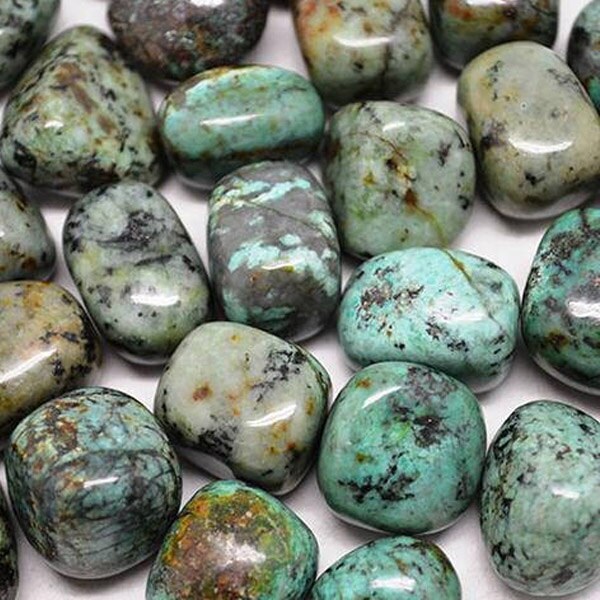Turquoise is one of the most spiritually sacred semi-precious gems of all the gem varieties. Turquoise has been used in many cultures and tribal traditions for decoration, ornamentation, jewelry and spiritual tools. It has been used as a bridge to connect Earth and Spirit for centuries, and honor the strengths and personal callings of warriors. It is a symbol of bravery, spiritual assignment, purpose, and sacred journeys. Beyond just a gem synonymous with the history of the American Southwest, Turquoise is a gem appreciated world wide.
Turquoise is an opaque, blue-to-green mineral that is a hydrated phosphate of copper and aluminum, with the chemical formula CuAl₆(PO₄)₄(OH)₈·4H₂O. Gems formed from Copper are incredibly conducive to electromagnetic frequencies, including, and especially to, the Earth's geomagnetic energy field. Those who work with Turquoise find themselves especially open to, and yet grounded with, mother nature, Earth Mother, and Father Sky; As above, so below. Life is all about balance.
Turquoise reminds us that in order to achieve any goal, no matter how courageous we are to achieve it, we must do it through balance. With balance comes wisdom, mastery, and longevity.
A warrior that is too hasty, isn't careful and falls in the traps of his own making. A warrior that is too hesitant, creates his own blockages and fails to take advantage of life’s wonderful opportunities. A warrior that is both steadfast and consistent, prevails.
Turquoise isn’t just for the warrior spirit. It can be used by those looking to discover a deeper route to their psychic receptivity, and the process of attaining spiritually led visions. This can be attained by holding it during meditation, placing it under a pillow while sleeping, or carrying a piece in a pouch or pocket during daily activities.
Turquoise is especially porous. So most Turquoise goes through a process called Stabilization which includes grinding, gluing, and compressing crushed Turquoise into desired forms for durability. It is then dyed, polished and drilled, to fashion them into beads or left as free form pieces. From there, they are often coated with a durable lasting wax or varnish to seal the gem. The important thing to look out for, if you’re especially looking for true natural Turquoise that has not been treated in any way, is to ask of the gems are untreated or treated. True natural Turquoise is priced differently than stabilized composite Turquoise, or substitute gems that are made to look like natural Turquoise.
Substitute gems that are often passed off as natural Turquoise are easy to spot if you know what you’re looking for.
Howlite, a naturally grayish white gem with dark grayish black veins is often used as a Turquoise substitute because it is harder on the Moh’s scale, and holds up to most lapidary practices such as cutting, grinding and drilling. It is also a semi porous stone that can be easily dyed without revealing dye concentrations or streaks in the finished product.
Turquoise is a well-loved gem used by Shamans throughout history. And was often given as a gift to others as a gesture of friendship, hope, strength and perseverance.
© Debbie Edwards
Debbie Edwards is an International Psychic Medium, Author, Broadcaster, Artist, Designer, Gem Dealer, Photographer and Retailer.
**The information provided is for reference and educational purposes only. It is not meant to treat, diagnose, or cure any illness or disease, nor is it to be used as a substitute for professional medical advice.
